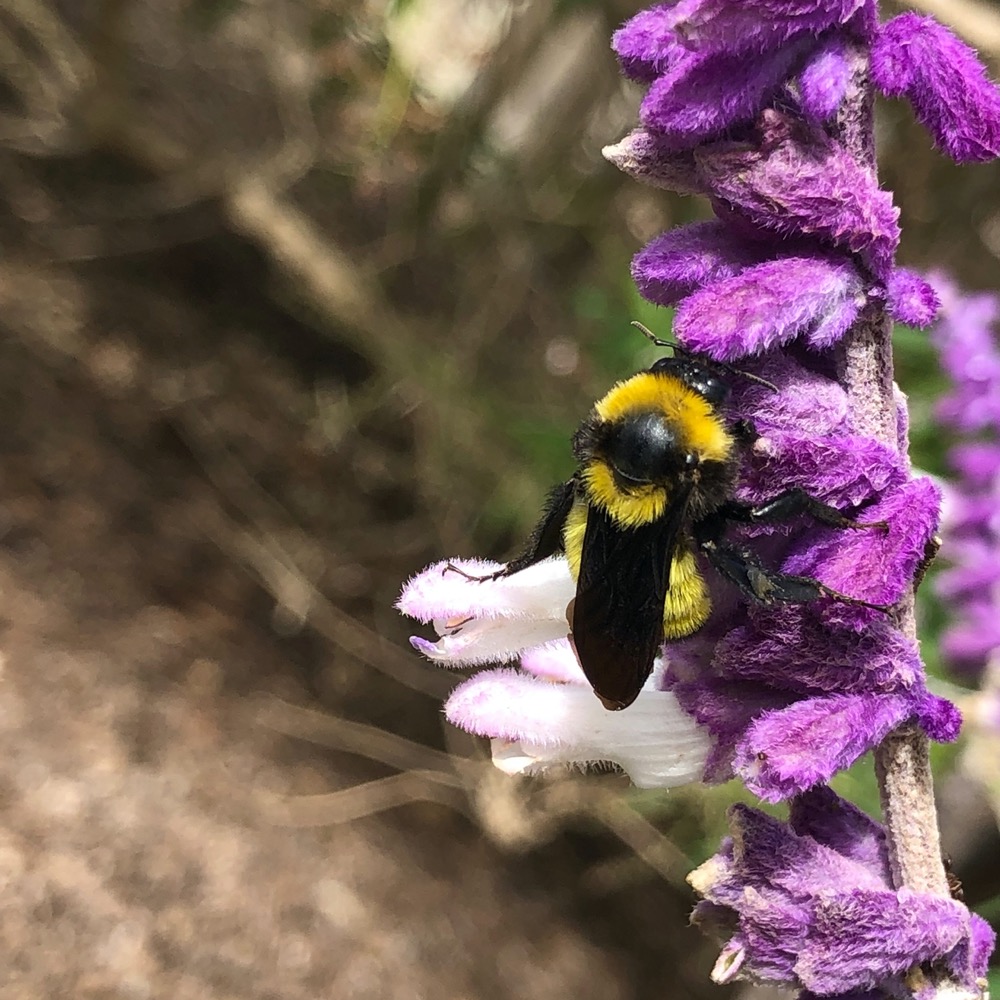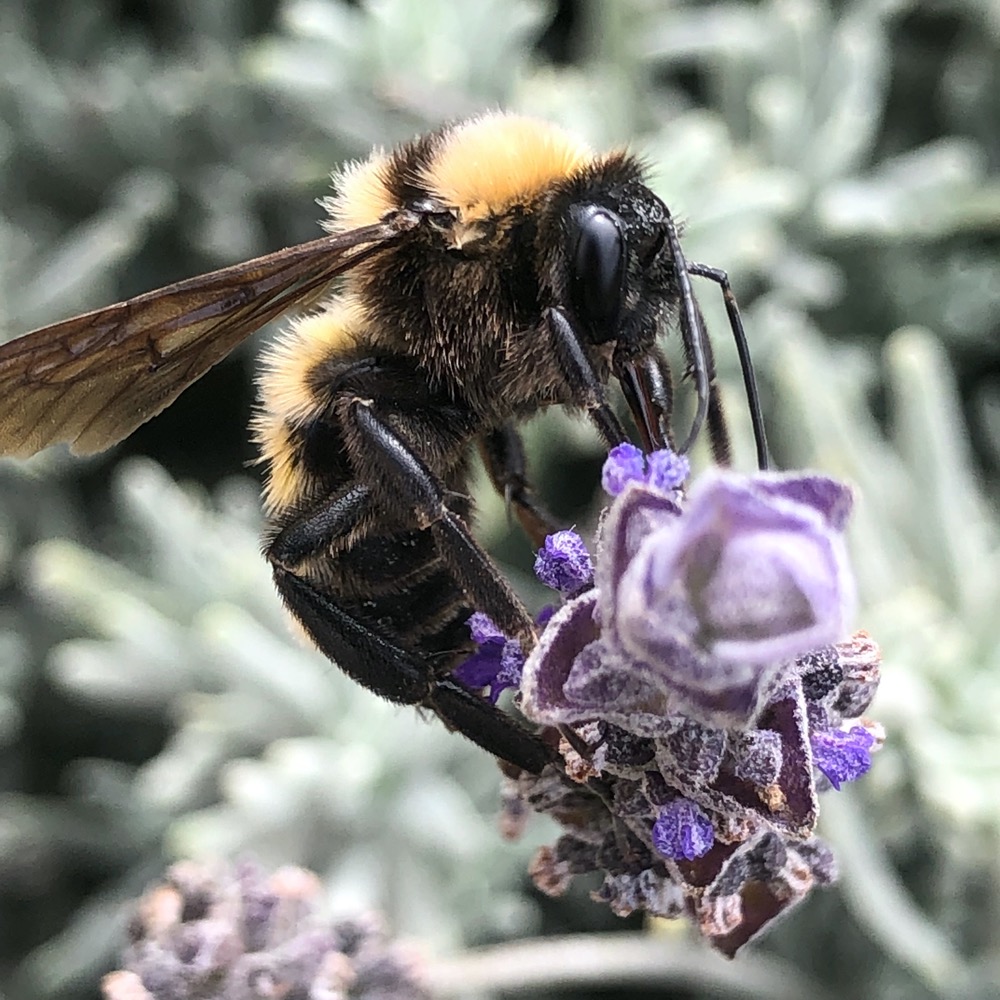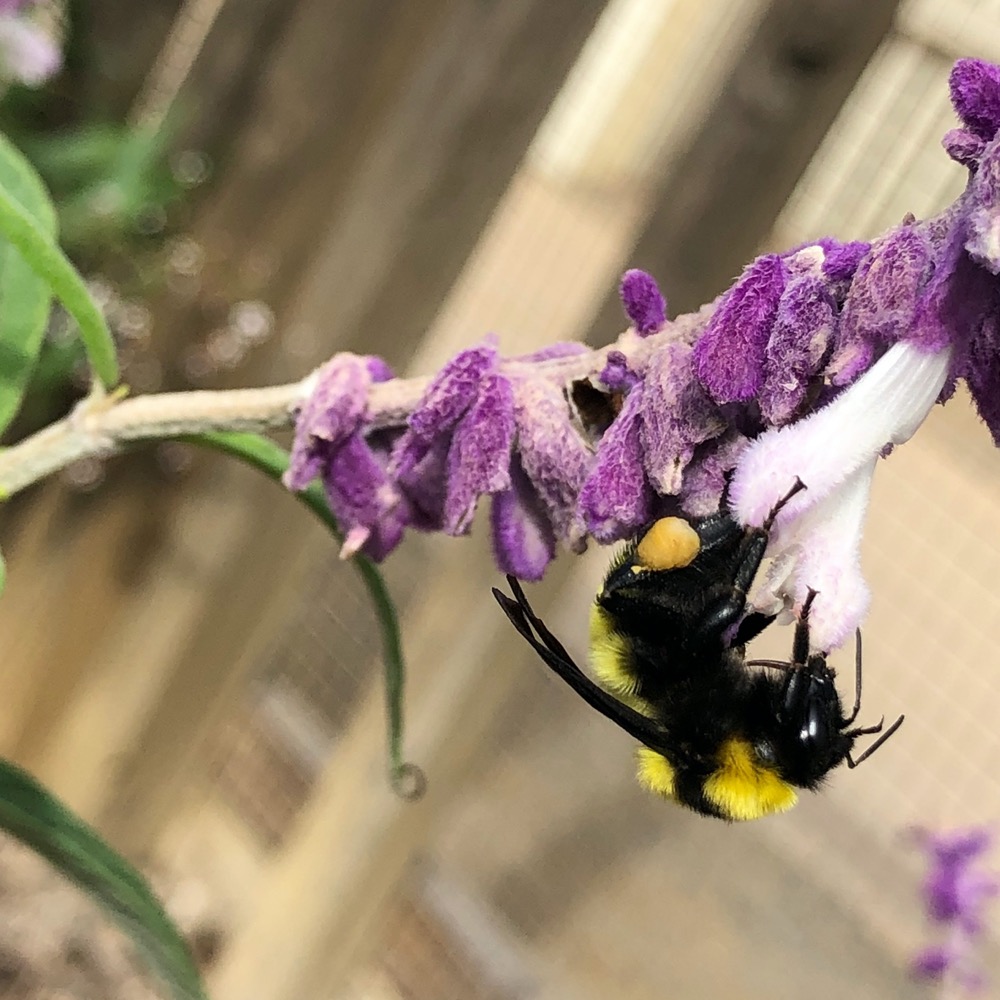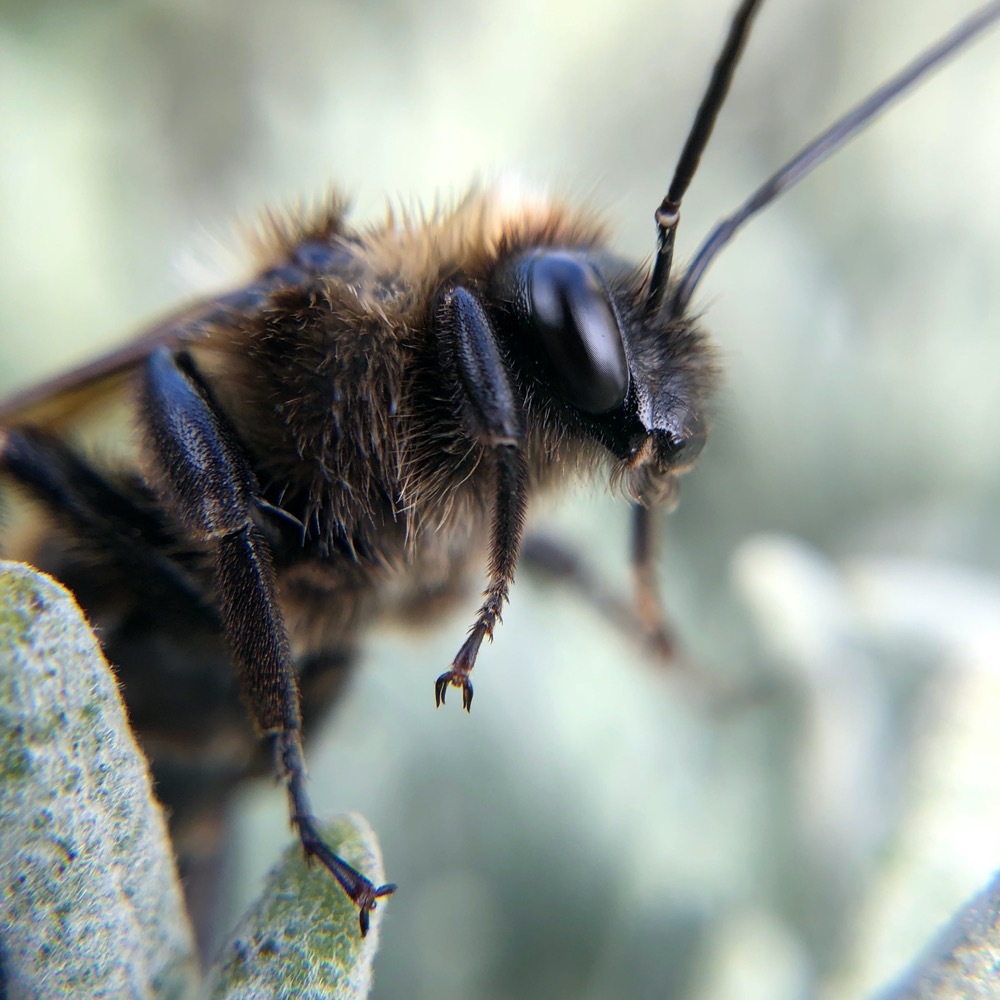One can usually spot a bumblebee when they see one because of their large size. One of the largest of the Bombus species in San Diego County is the Sonoran bumblebee (Bombus sonorous). This species is unlike other bumblebee species in that it is active in the late summer and fall, as opposed to being active in the spring.
The Sonoran bumblebee is not only large, but it is very colorful too. The worker bees are 14 mm – 18 mm long with queens growing even larger. The head of the bumblebee is black with bright yellow fur on the front and back of the thorax. This yellow fur is broken by a black band of fur between the wings. The abdomen is yellow as well, except for the last three segments, which are black.
 NPS Photo/Andrew Rosales –Bumblebee with showy bright bands of yellow fur.
NPS Photo/Andrew Rosales –Bumblebee with showy bright bands of yellow fur.
The Sonoran bumblebee will visit a large range of flowering plants when searching for nectar. This adaptation is beneficial due to the smaller amount of natives blooming at this time. This is why you may see them in your garden or on other ornamentals in your yard. This foraging is important as new nest building colonies begin in the fall.
 NPS Photo/Andrew Rosales –Bumblebee using proboscis to gather nectar from Lavender bloom.
NPS Photo/Andrew Rosales –Bumblebee using proboscis to gather nectar from Lavender bloom.
As the virgin queens immerge from healthy colonies in the fall months, they make contact with males that patrol territories and mate. These males are only present for a short time and die within a few weeks, once this cycle begins.
The newly mated queens disperse to find burrows suitable to make a colony; this could be underground mouse nests or other burrows vacated by the previous owner. These colonies are called primitively eusocial. This means:
-
A single queen establishes a nest by herself.
-
The queen will work hard to forage for pollen and nectar to raise her first few offspring.
-
Once the first batch of offspring come into adulthood, they will start foraging and tending to the colony and the queen can then stay back and produce eggs.
-
There’s usually little specialization of tasks (unlike in honey bee colonies); most workers will do a variety of similar things to maintain, provide for, and defend the colony.
-
There’s usually little outward difference between the queen and her offspring; most of the difference is the size and development of ovaries (queens are bigger and have more developed ovaries).
-
The queen lives for about a year, and thus so does the colony; at the end of each year (not necessarily following the Julien calendar) new virgin queens leave the nest, mate with wandering males, and find a place to rest, where they will stay dormant until the beginning of their nest-building season. (K. James Hung, 2014)
 NPS Photo/Andrew Rosales – Worker Bumblebee with pollen sack on Lavender flower.
NPS Photo/Andrew Rosales – Worker Bumblebee with pollen sack on Lavender flower.
Bumblebees have an interesting behavior that they perform with their wings. They sonicate certain flowers, or “buzz” them, to remove the pollen. This is due to the fact that in about eight percent of the world’s flowering plants the anthers are shaped like salt shakers with holes at the bottom of the anther. The female bites into the anther and curls her body around the flower. Then, using her wings and flight muscles, she buzzes to create a tone, just like a vibrating tuning fork, that shakes the pollen out of the anthers. This pollen is the collected for use as larval food.
 NPS Photo/Andrew Rosales –Bumblebee face and foreleg, middle leg, and claws.
NPS Photo/Andrew Rosales –Bumblebee face and foreleg, middle leg, and claws.
Not only are they beautiful, but they have special adaptations to help them gather food and pollinate plants. The Sonoran Bumblebee can be seen here at Cabrillo National Monument among the fall flowering native species and plants within the lighthouse garden. So next time you see a bumblebee, take a moment to observe how these insects gather pollen from the flower they have landed on. It might just be a little shaky!
Sources: https://sdnativebees.tumblr.com/post/82099348839/bombus-sonorus (K. James Hung, 2014).
https://www.fs.fed.us/wildflowers/pollinators/pollinator-of-the-month/SonoranBumblebee.shtml (Stephen Buchmann)
